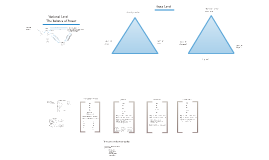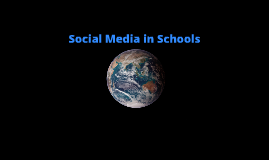Is Twitter Good for Students?
Transcript: Twitter is only as much of a distraction as anything else. Someone who wants to study will study and won't let anything get in his or her way. On the other hand, even if Twitter didn't exist, procras Bibliography The Good The Bad When you are inevitably sufficiently addicted to Twitter your time will start to vanish. As a student, one of the worst things you could do to yourself is throw away your precious time that could be used for studying or other beneficial activities. A study conducted in Lock Haven University by Dr. Reynol Junco had results that were consistent with Twitter being more beneficial to a student that harmful. The experiment was set up with two separate groups of people in pre-health professional programs. The curriculum of one group had Twitter incorporated into it such that the students had to tweet about shadowing a professional or something along the lines. The other group did not have Twitter woven into the curriculum. The results showed that the Twitter group had twice the involvement and engagement with also a tangible .5 increase on their GPA for that semester. The Reality Is Twitter Good for Students? The Worse Drexler, D. (2014, February 21). Twitter: The Good, the Bad and the Ugly. Retrieved November 16, 2014, from http://hellogiggles.com/twitter-good-bad-ugly Soltero, A. (n.d.). 5 Reasons Twitter is Better for College Students than Facebook. Retrieved November 16, 2014, from http://thesocialu101.com/5-reasons-twitter-is-better-for-college-students-than-facebook/ Kessler, S. (2010, November 4). Twitter Increases Student Engagement [STUDY]. Retrieved November 16, 2014, from http://mashable.com/2010/11/04/twitter-student-engagement/ Lytle, R. (2012, October 29). Study: Twitter Improves Student Learning in College Classrooms. Retrieved November 16, 2014, from http://www.usnews.com/education/best-colleges/articles/2012/10/29/study-twitter-improves-student-learning-in-college-classrooms November, A., & Mull, B. (2012, October 18). Twitter as a Powerful Educational Tool | Using Twitter Hashtags. Retrieved November 16, 2014, from http://novemberlearning.com/educational-resources-for-educators/teaching-and-learning-articles/how-twitter-can-be-used-as-a-powerful-educational-tool/ Dwyer, L. (2011, May 25). Why Twitter Is a Teacher's Best Tool. Retrieved November 16, 2014, from http://magazine.good.is/articles/why-twitter-is-a-teacher-s-best-tool Ferriter, W. (2010, February 1). Membership. Retrieved November 10, 2014, from http://www.ascd.org/publications/educational-leadership/feb10/vol67/num05/Why-Teachers-Should-Try-Twitter.aspx Can Tweeting Help Your Teaching? (n.d.). Retrieved November 16, 2014, from http://www.nea.org/home/32641.htm Miller, S. (n.d.). 50 Ways to Use Twitter in the Classroom. Retrieved November 16, 2014, from http://www.teachhub.com/50-ways-use-twitter-classroom 10 Ways Teachers Can Use Twitter for Professional Development ~ Educational Technology and Mobile Learning. (n.d.). Retrieved November 16, 2014, from http://www.educatorstechnology.com/2012/10/twitter-for-professional-development.html Raise Smart Kid. (n.d.). Retrieved November 16, 2014, from http://www.raisesmartkid.com/10-to-16-years-old/6-articles/43-facebook-myspace-twitter-good-or-bad-for-kids-brain Davies, H. (2013, January 8). Retrieved November 16, 2014, from http://www.independent.co.uk/student/9-reasons-why-students-shouldnt-join-twitter-8441649.html Twitter, bad for our brains? (2012, February 24). Retrieved November 19, 2014, from http://www.channel4.com/news/twitter-bad-for-our-brains Collins, B. (2009, March 5). 20 good and 20 bad things about Twitter. Retrieved November 16, 2014, from http://www.pcpro.co.uk/blogs/2009/03/05/20-good-and-20-bad-things-about-twitter Warning: Social media may be bad for you - BelfastTelegraph.co.uk. (n.d.). Retrieved November 16, 2014, from http://www.belfasttelegraph.co.uk/life/features/warning-social-media-may-be-bad-for-you-30493964.html Crum, M. (2014, September 10). Is Twitter Bad For Language? Statistical Analysis Says No (NEW BOOK). Retrieved November 16, 2014, from http://www.huffingtonpost.com/2014/09/10/twitter-language-book_n_5786556.html McKinney, L. (2011, July 18). 6 Scientific Reasons Social Networks Are Bad for Society. Retrieved November 16, 2014, from http://www.cracked.com/blog/6-scientific-reasons-social-networks-are-bad-society/ Jung, B. (n.d.). The Negative Effect of Social Media on Society and Individuals. Retrieved November 16, 2014, from http://smallbusiness.chron.com/negative-effect-social-media-society-individuals-27617.html Henderson, J. (2012, December 29). 3 Reasons You Should Quit Social Media In 2013. Retrieved November 16, 2014, from http://www.forbes.com/sites/jmaureenhenderson/2012/12/29/3-reasons-you-should-quit-social-media-in-2013/ Parrack, D. (2012, April 12). The Negative Impact Of Social Networking Sites On Society [Opinion]. Retrieved November 16, 2014, from

















